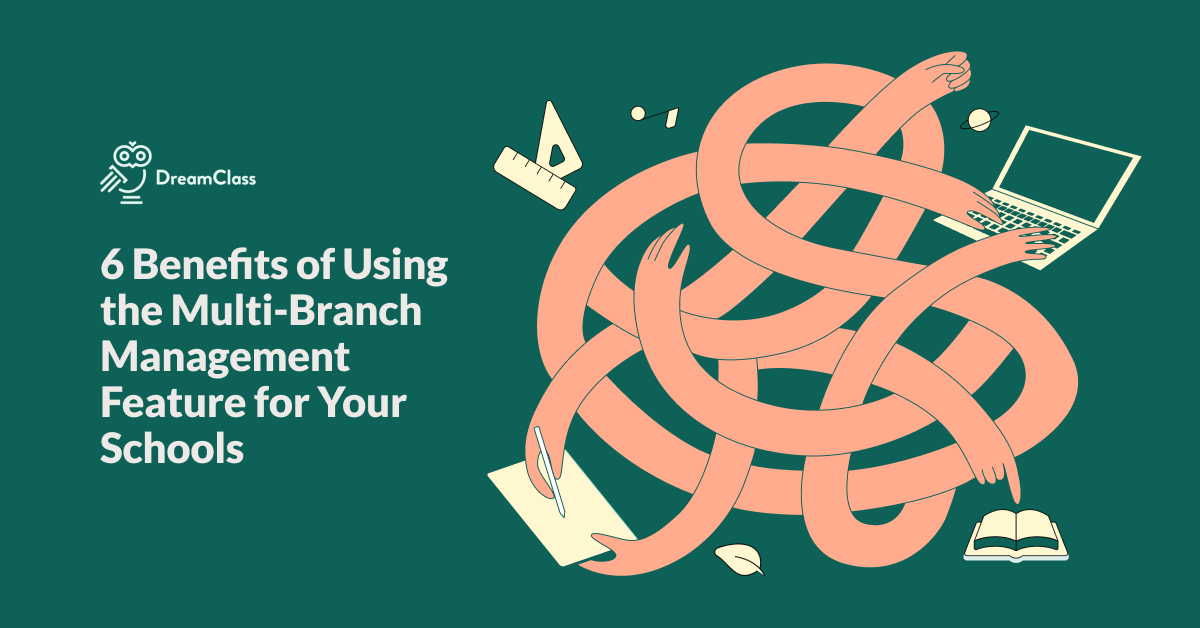What is School Management Software?
School management has consistently posed a multifaceted challenge for educational institutions worldwide. Its complexity mainly stems from overseeing administrative processes to ensure sustainability and scalability while fostering students’ academic progress for ongoing learning. This challenge applies just as much, if not more so, to schools operating in remote settings. Proficient data analysis is vital for smooth school operation, while efficient and impartial management keeps all parties involved satisfied and motivated. Utilizing School Management Software can contribute to achieving these objectives.
This leads us to the question: “What does School Management Software encompass, and why should educational institutions consider its adoption?”
Table of contents
- School Management Software, Defined
- Key Features of School Management Software
- Benefits of Utilizing School Management Software
- Who is School Management Software For?
- What Does it Cost Educational Institutions?
- The Cost of Not Adopting School Management Software
- Harnessing the Power of School Management Software
School Management Software, Defined
School Management Software, in essence, is a sophisticated tool designed to streamline the management and administration of educational institutions. In this respect, its central objective is to automate, often time-consuming, administrative tasks and processes. Also referred to as a “School Management System”, “School Administration Platform”, or a “Student Information System” this type (or category) of software, offers a wide range of functions, encompassing everything from student enrollment, class management, and comprehensive attendance and performance tracking, all the way to financial management.
Administrative management within educational institutions typically covers both faculty and students. Some systems even incorporate features to facilitate day-to-day operations, like facility maintenance, supplies management, and inventory tracking. The need for this feature set depends on the scale and size of the educational institution.
Key Features of School Management Software
The majority of School Management Software products are centered on four primary pillars. Regardless of the range of features available, we can find a basic set of functionalities within these pillars, designed to cater to the daily operations of virtually any educational institution.
1. Program Management and Class Scheduling
Let’s begin with Program Management in its broader context: Within this comprehensive feature, you’ll find a suite of tools designed to assist in curriculum organization, course and class grouping, and defining unique attributes for each. This function typically serves as the core of School Information Software, encompassing class scheduling for both physical and virtual classroom sessions.
2. Student Admissions and Information Management
Student registration, allocation to class groups, and enrollment in courses and classes also represent central functionalities within School Management Software. Over time, the data collected through these processes serves as the basis for monitoring and analyzing individual progress until graduation.
Financial and Assessment Management for Students
In addition to daily class-related notifications, school management extends beyond the classroom. Students, parents, and guardians often require access to essential information, including schedules, attendance records, gradebooks, fees, pending and outstanding balances, and installment plans (whenever applicable). This feature encompasses all the specific functionalities necessary to deliver this crucial information.
3. Academic Management
Coordinating and supervising school faculty can often be just as challenging as managing students. A School Management System plays a vital role in efficiently overseeing all daily processes that pertain to teachers, secretaries, administrative teams, and supporting staff.
Financial and Assessment Management for Teachers
The suite of features within Academic Management may encompass tasks such as attendance tracking, grading, assessments, financials, and payment processing specific to teachers, including monitoring pending and outstanding payments.
4. Role Management
In School Management Software, role management is a crucial function that ensures a smooth and secure user experience for all individuals involved. It enables users to access and interact with specific types of information based on their roles, needs, and responsibilities.
In other words, role management primarily serves as a security mechanism, restricting access to information that aligns with a user’s designated role. This enhances data security, effectively safeguarding personal information.
Note that online parent or guardian and student portals rely on role management to grant students and parents or guardians access to relevant materials and facilitate communication with teachers, coaches, or instructors.
Benefits of Utilizing School Management Software
1. Streamlined and Automated School Structure for Any Type of School
Implementing School Management Software simplifies the process of organizing classes and courses for each new academic period. It facilitates the seamless inclusion of existing teachers and qualified students into the structure, ensuring they receive notifications about their updated schedules. Furthermore, the software supports the ongoing addition of new teachers and students, providing a dynamic solution for school management.
2. Improved Financial Management
The software’s structure also facilitates basic financial management, enabling educational institutions to establish tuition fees for students and maintain payroll information for teachers, coaches, or instructors in a more streamlined and efficient manner.
3. Comprehensive and Streamlined Record-Keeping
Once a new department, course, or class is introduced to the school, the software efficiently incorporates new or existing students and teachers into the structure. This prevents issues like teachers overbooking classes or students being assigned to multiple classes simultaneously, offering invaluable support in managing educational institutions effectively.
4. Smooth Student and Teacher Management
Managing students and teachers in academic environments can be intricate. It requires constant monitoring and improvement of all daily routines. When all educational activities run smoothly, it leads to happy students, parents or guardians, and teachers, coaches, or instructors. This, in itself, serves as a powerful retention tool for any educational institution.
For Students
Efficiently tracking attendance, progress, assessments, grades, graduation status, financial details, health monitoring, and class schedules represents a significant time-saving benefit. The incorporation of subtle automation within these features strikes a balance between efficiency and continual enhancement, offering students a more streamlined educational experience.
For Teachers, Coaches, or Instructors
The ability to monitor attendance, progress, assessments, financial information, and class schedules, as well as facilitate communication with parents and guardians stands as the optimal approach for educational institutions to achieve peak performance and seamless operations. Additionally, School Management Software provides analytics and reporting tailored to different layers of management, ensuring effective supervision and decision-making.
5. Effortless Business Continuity
Cloud-based School Information System offers enhanced business continuity, operating independently of local infrastructure. School records and scheduling are managed directly in the Cloud, accessible from any location, at any time. What’s more, this structural advantage of Cloud-based School Management Software can prove invaluable in cases of emergency.
6. Monitoring Progress and Performance Becomes a Breeze
With School Management Software up and running, school administrators can efficiently monitor both students and teachers, evaluate progress, and implement corrective measures to enhance success rates. Improving track records is arguably the most effective strategy for academic institutions to boost enrollments in the upcoming seasons. To that end, relevant reporting and timely notifications play a pivotal role in driving improvement.
7. Secure and User-Friendly In The Cloud
Highly-grained user roles introduce a multi-layered approach to protecting information. Furthermore, the software can adhere to essential ISO procedures to ensure security and compliance with data protection regulations like GDPR.
What’s truly remarkable with such software though is that educational institutions don’t have to spend a fortune on costly servers, specialized software, or dedicated personnel to ensure smooth operations. A simple desktop computer or laptop with internet access via a web browser is all that they’ll ever need. This accessibility enables authorized personnel to manage the institution from any location, at any time.
Who is School Management Software For?
School Management Software can cater to any type of educational institution, offering valuable tools for organizing their structure, curriculum, syllabus, and communications. It also provides robust reporting capabilities to monitor various processes. Among other types of schools, this type of software is beneficial for:
- General Educational Institutions
- Preschools
- K12 Schools
- Faith-based Schools
- Vocational Schools
- Cram Schools
- Colleges
- Sports Academies
- Boot camps and summer schools
- Music Schools
- Dance Schools
- Art Schools, in general
In essence, School Management Software is a versatile solution that can be adapted to meet the specific needs of a diverse range of educational organizations, from small private schools to prestigious universities and multi-branch educational institutions.
What Does it Cost Educational Institutions?
The cost to educational institutions for adopting School Management Software can be assessed through various perspectives, each contributing to the optimization of the final expenses. Given that optimal costs are often influenced by the size of the educational organization, the most effective approach involves employing a combination of these perspectives, which many vendors incorporate into their pricing plans.
Per Student Pricing
Certain software providers employ a per-student pricing model, requiring schools to pay a specified fee for each student through their software platform. The cost per student can range from a few dollars to several dollars per month or year. The exact price often depends on the features included, with more feature-rich software typically costing more per student.
Per Month or Year Pricing
Monthly or annual subscription pricing is common among subscription-based School Management Software (see below in the SaaS section). Be that as it may, it can be somewhat tricky to decipher. To elaborate, some providers offer flat-rate pricing, where schools pay a fixed monthly or annual fee, regardless of the number of students. The cost can vary widely based on the software’s capabilities and the size of the school. Smaller schools may pay less, while larger institutions may pay more.
Other School Management Software providers offer a tiered pricing plan, based on the size or needs of the school. For example, they may have different pricing plans for small, medium, and large institutions. The cost per student per month or year can vary within each tier.
Custom Pricing
In some cases, larger or more complex educational institutions may negotiate custom pricing with software providers, based on their specific requirements. Custom pricing can be influenced by factors like the number of students, additional modules or integrations, and customization needs.
One-Time Payment
Sometimes school managers prefer the convenience of paying for their School Management Software subscription upfront, often for an extended period, such as annually. This approach can provide cost savings, eliminate the need for monthly payments, and offer budget predictability, making it a preferred option for many institutions.
The Software-as-a-Service Model (SaaS) Billing Approach
In the realm of Software-as-a-Service (SaaS) platforms, two main billing options exist: monthly and annual. Of these, the annual billing option is the preferred choice for most. While this entails a substantial upfront expenditure, it is favored by many institutions due to its long-term cost-effectiveness.
Service-Level Agreement (SLA) in Software Delivery
When considering various software delivery methods, some vendors prefer to develop solutions that can be installed on physical servers located on the premises of educational institutions. This setup typically involves entering into a Service-Level Agreement (SLA) and requires a substantial upfront financial commitment. However, the financial implications extend beyond the initial cost.
Opting for a local server results in additional expenses, such as:
- the purchase of the server’s operating system,
- other necessary software,
- hiring specialized personnel to manage and maintain the server,
- implementing the software properly, and
- possible training costs, which may be substantial due to a potentially steep learning curve.
Due to these expenses, maintaining business continuity may prove to be challenging with this type of solution.
The Cost of Not Adopting School Management Software
Regardless of the type of delivery, School Management Software is undeniably an invaluable tool for educational organizations. While its initial acquisition may seem costly, the reality is that not employing such software can ultimately prove even more expensive. This holds true when considering the expenses associated with poor organization, ineffective management, and a potentially higher turnover rate for both students and teachers. In addition, when considering the competition factor, it becomes evident that School Management Software is an indispensable necessity.
Why Is It Worth the Investment?
While School Management Software may not address structural issues within your institution, it does offer significant short-term and long-term benefits, saving both time and money. It achieves this by reducing three key areas of expenditure:
- Minimizing Paper Costs: The transition to digital processes, including various helpful applications, readily available student and teacher records, grading and performance reports, etc., is not only convenient but also contributes positively to the environment.
- Saving Employee Hours: School faculty will no longer need to work overtime to complete paperwork, as School Management Software handles the bulk of tasks through efficient automation.
- Reducing Meeting Times: Automating various administrative processes, including report sharing and student evaluations, significantly reduces the time and effort required for faculty meetings — potentially even eliminating them altogether.
Harnessing the Power of School Management Software
In conclusion, investing in School Management Software is unquestionably worthwhile, if not imperative, as it revolutionizes daily operations, by automating tasks, streamlining processes, and simplifying administrative management. Furthermore, this type of software is designed to adapt seamlessly to the growth of an educational institution, accommodating new students, teachers, classes, and courses with ease. At the end of the day, it’s a game-changer for schools and educational organizations of all types, providing unmatched efficiency, and serving as a catalyst for innovation.





